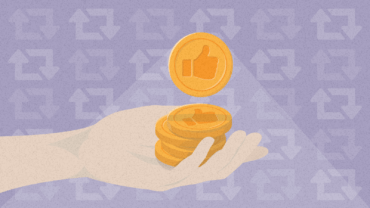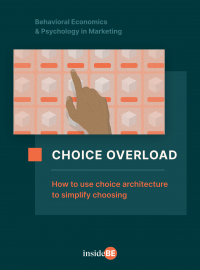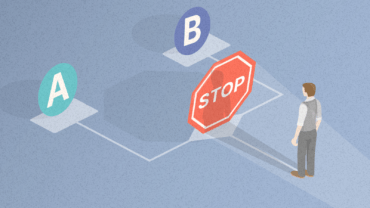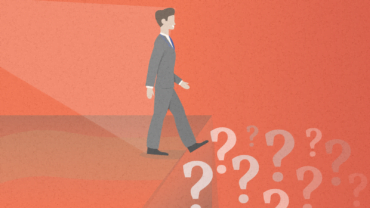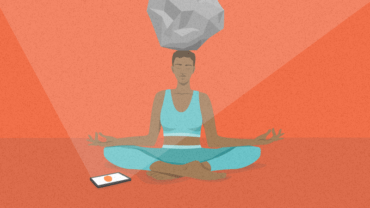Influencing Decisions Isn’t Everything! Make Customers Feel Good About Their Choices.
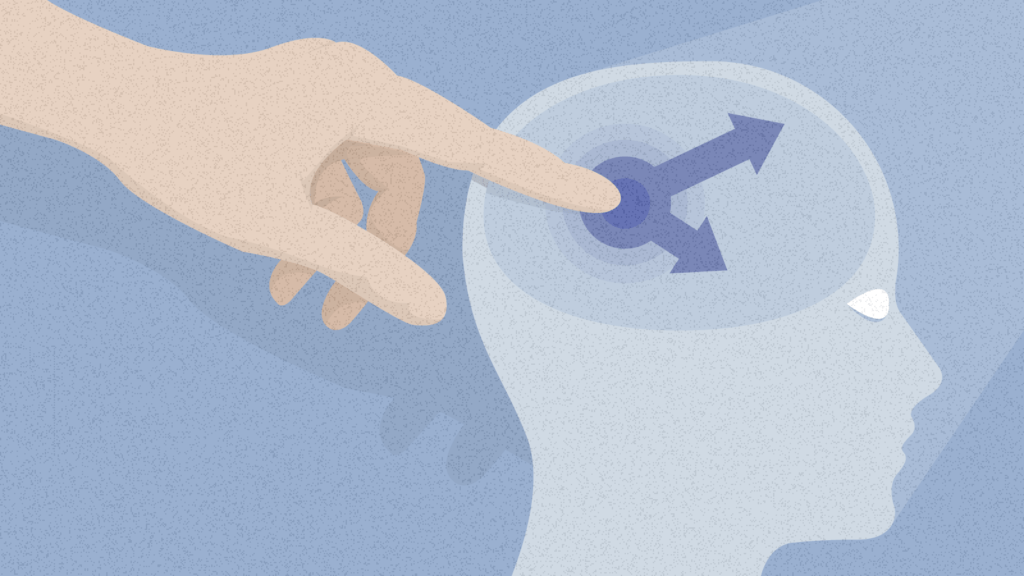
In business, we naturally focus on influencing choice. But we might be missing a trick (and potentially a lot of revenue) by not investing time and effort into helping our choosers to feel good about their choices.
In this article you will learn:
- Why helping people feel good about their decision to choose your product, or adopt a behavior you need them to embrace is important;
- How decision confidence can lead to happier choosers;
- How self-efficacy and decision-making self-efficacy are conditions that underpin decision confidence; and
- Simple ideas you can use to create greater decision confidence amongst your customers during their decision journey.
Influencing decisions isn’t everything!
If you are in marketing, and somebody asks you “what do you do?”, a reasonable answer might be “I create programs that influence people’s decisions so that they’re more likely to buy our products or services”. In fact, at The Business of Choice, we’ve been using the following definition for over a decade.

Discover ground-breaking ideas and fascinating solutions.
Marketing is the creation, management, and measurement of programs designed to influence the choices you need people to make to meet your objectives.
Marketing is the creation, management, and measurement of programs designed to influence the choices you need people to make to meet your objectives.
Put “choice” at the center
A situation which is not good from a marketing perspective is to feel bad about a choice and about ourselves as choosers.
Putting “choice” at the center, as this definition does, is a good start (we call this a choice-centric rather than a consumer-centric approach to marketing). But to simply “influence” a choice is to do only half the job. The process of choosing is the stage for many emotions – opportunities to assert our identity, to show our expertise, to feel good about ourselves as choosers. And a situation which is not good from a marketing perspective is to feel bad about a choice and about ourselves as choosers.
Enabling people to feel good about a choice, to feel they’ve made a smart decision, or developed expertise that has allowed them to choose well, or that they have an innate ability to discern a good choice isn’t just something that creates positive emotions in the chooser. It can create important commercial opportunities for the marketer.
It’s not your brand, it’s their decision
You might be thinking “we already do a lot to make people feel good about our brand”. But there is a subtle but important difference in what we’re talking about here. We’re not saying make people feel good about your brand. We’re saying create a choice process that allows people to feel good about their decision to choose your brand. The focus here is not your brand, it is their decision.
There are a number of stages in the customer journey that provide opportunities to help people feel good about their choices. The first, which we’ll cover in this piece, is boosting the decision confidence of people who are in the process of making a choice. In the next article in this series, we’ll show you how to find opportunities to help them feel they made a good choice after they have made their decision.
Create a choice process that allows people to feel good about their decision to choose your brand. The focus here is not your brand, it is their decision.
The benefits you get when people feel good about their decision process
Research focused on how people feel about their decision process (rather than the product they chose) revealed that when people felt confident about the way they had chosen, they were more likely to repeat their purchase of that product.
One of the most notable minds at the intersection of marketing and psychology is Baba Shiv, a professor at the Stanford Graduate School of Business. Beyond increasing the likelihood of repeat purchase, Shiv suggests that when people feel confident in their choices, they get more utility out of the product, and they also feel good about the brand. But this confidence in choice is not just a powerful form of brand equity. The real payoff may be how decision confidence translates choosers into influencers. Shiv believes that people who are truly confident about their choices are more contagious as recommenders and advocates.
When people feel confident in their choices, they get more utility out of the product, and they also feel good about the brand. But, the real payoff may be how decision confidence translates choosers into influencers.
There are some important things for marketers to take from Shiv’s perspective:
- Satisfaction with a product or brand doesn’t just come from its performance, but also from how good purchasers feel about their decision. If it feels like the right decision, our emotions and experiences tell us it is. People might run faster in their new running shoes when their choice has been affirmed as a good one or enjoy wine more if they feel they made a smart decision in selecting it.
- When a decision feels good, it’s contagious, and people feel compelled to let others know about their great choice. Sharing that you made a great choice is less a recommendation and more a signal as to how smart or resourceful you are.
- By all means invest time and money on influencing an initial decision. But in a world where the opinions of “others” is the greatest influence, investing a little more effort in helping people who have already bought your brand to feel good about their choice could bolster their instinct for spreading that feeling.
How can you make people feel good about their choice?
One way to improve decision confidence is to increase what is known as Decision-Making Self-Efficacy (DMSE). DMSE is a type of self-efficacy, which describes our mindset when we have confidence in ourselves to achieve a specific goal.
Albert Bandura, a giant of modern psychology, describes self-efficacy like this: People avoid activities and situations they believe exceed their coping capabilities. But they readily undertake challenging activities and select situations they judge themselves capable of handling.
Making the decision to choose your product or service a task that choosers “judge themselves capable of handling” is an important, but often overlooked role of marketing. When people have been primed to feel a sense of self-efficacy in an area where they will make more daring choices, they are often more decisive and more likely to make decisions that overcome inertia or go against the default or status quo.
People avoid activities and situations they believe exceed their coping capabilities. But they readily undertake challenging activities and select situations they judge themselves capable of handling.
In a study titled Choosing With Confidence: Self-efficacy and preferences for choice, the researchers gave participants the task of choosing a photo printer. The participants provided answers to questions they were told would indicate their ability to make a good choice, and were then either given feedback saying the decision would be easy for them (High DMSE condition), that it would be difficult for them (Low DMSE condition) or were given no feedback (control). They were assigned these conditions randomly – the actual answers they gave did not affect which condition they were assigned to. Those who were in the low DMSE condition reviewed less options, had less of an appetite for information and were less engaged in the choice.
Giving choosers questions to answer, and questions to ask
As practitioners, we should consider how we help choosers approach the choices we would like them to make with a high level of decision-making self-efficacy. So how might we go about doing that?
Asking choosers to answer questions that are easy to answer about their knowledge of the category could help build their decision confidence – as long as there’s a good chance they will answer those questions correctly. For example, “which uses the most data: audio or video?” could be a good question to build DMSE for choosers who are selecting a mobile data plan.
Asking choosers to answer questions that are easy to answer about their knowledge of the category could help build their decision confidence.
Another approach, which is used widely in healthcare, is to provide a Question Prompt List (QPL). In a medical context, this provides questions for the chooser to ask their doctor, and has been shown to improve their self-efficacy in decision-making. In a commercial context a QPL can be used as a checklist of questions for the chooser to ask themselves, or to ask a salesperson. This provides great opportunities to boost your potential choosers’ decision confidence.
Let your choosers be the expert
We are often tempted to position our products and services as the experts in their categories. In some areas – particularly complex ones – this can be a powerful strategy. But don’t let that deflect you from something critical. The more you can make your choosers feel they are the expert in the process of choosing, the more likely they are to feel good about their choice. And as Baba Shiv tells us, that can be very good for business.
In the words of the CMO of a large US company, “We should spend less time figuring out how to declare that our brand is a winner, and a lot more making sure it’s the customer that feels victorious.”
Key takeaways
- Having confidence in one’s ability to complete tasks or achieve goals is called self-efficacy. Marketing can really help people reach this state, which can be emotionally and functionally beneficial for the end user or chooser. In the past, brands tried to position themselves as the experts. From the perspective of helping people make confident choices, focus more on helping them feel like the expert.
- Make people feel confident in their ability to make a decision. Quizzes and games can really help with this. Asking them a question (like “which uses the most data, video or audio?”) could create a sense of self- efficacy in choosing a wireless data plan. A benefit of this is they are likely to become bolder and quicker in their decision making.
- And remember… As far as the chooser is concerned, the most important thing is not your brand, it is their decision to choose it.


